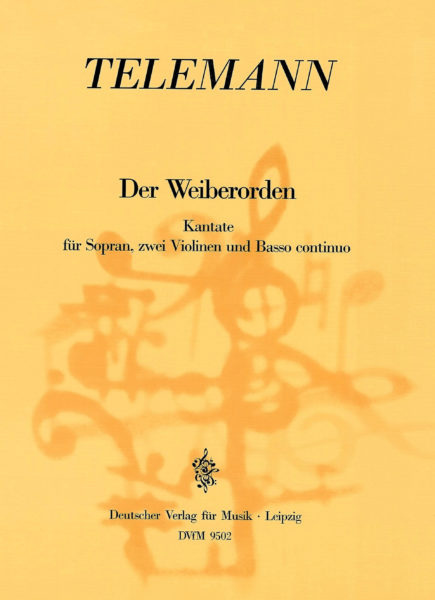Georg Philipp Telemann (1681–1767) Der Weiberorden
Urtext herausgegeben von Wolf Hobohm [S,2Vl,Bc]
24 Seiten | 23 x 30,5 cm | 114 g | ISMN: 979-0-2004-9088-6 | Broschur
Kantaten zu weltlichen Gelegenheiten gaben Georg Philipp Telemann wiederholt reichen Anlass, Witz und Humor aufblühen zu lassen. Ist es etwa im Schulmeister ein aufgeblähter Kantor vor seiner Schulklasse, in der Kanarienvogel-Kantate der ach so schmerzliche Verlust eines kleinen Hausgenossen, so lässt uns Telemann in seiner Kantate Der Weiberorden TWV 20:49 an der Vorfreude einer jungen Braut auf das künftige Eheleben teilnehmen.
Den mitunter drastisch-deftigen Text, mit einer unbeschwerten, heiteren Musik versehen, nimmt man schmunzelnd zur Kenntnis. Zwischen den Arien, deren eine sich noch verhalten und opernhaft, die andere jedoch freudig und ausgelassen gibt, gewinnen kurze Rezitative, besonders aber das Wiegenlied, unser Interesse. Meisterhaft und zugleich schalkhaft wird manche textliche Wendung musikalisch unterstrichen und verdeutlicht. Kleine überraschende Effekte, an denen man seine helle Freude haben kann, begegnen uns überall; sie geben uns den Hinweis, daß dieses Werk wohl als Ständchen zu einer Hochzeitsfeier gedacht war, wobei zu vermuten ist, dass bei der Darbietung zugleich agiert wurde.
| 1. Arie: Du angenehmer Weiberorden |
| 2. Rezitativ: Nun kann ich mich recht aus dem Fundament vergnügen |
| 3. Wiegenlied: Schlaf, mein liebes Söhnelein |
| 4. Rezitativ: Ihr Jungfern! folget mir |
| 5. Arie: Ei wie würdet ihr nicht lachen |









